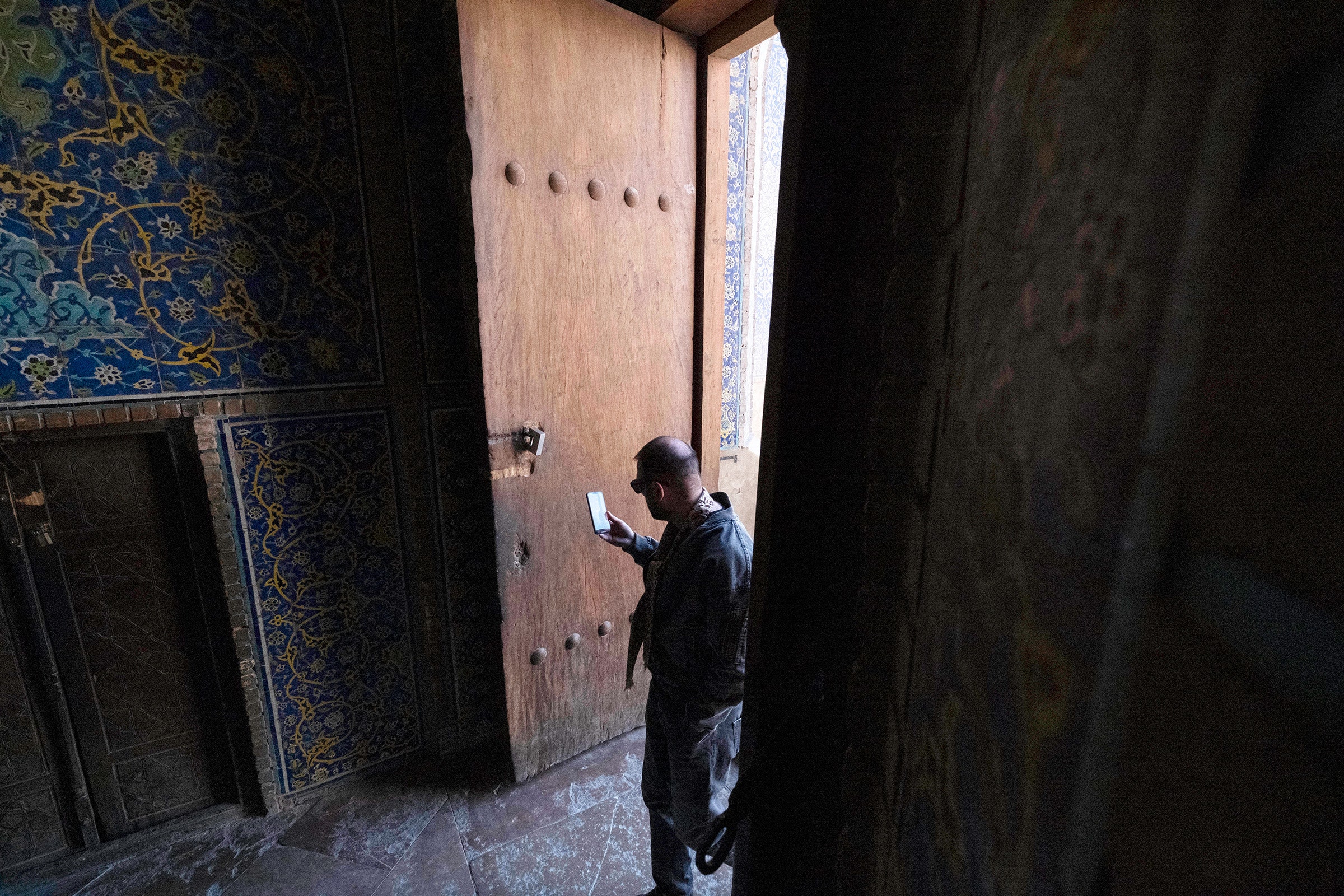For years, the Iranian regime has been building the technology and infrastructure needed for it to control, censor, and shut down internet access for more than 80 million Iranians. In 2019, the country shut off internet access as police sought to silence protesters, while in 2022 WhatsApp and Instagram connections were severed following protests after the death of 22-year-old Mahsa Amini in police custody. Each shutdown deprives people of information and has huge economic costs. Now as the conflict between Israel and Iran approaches the end of its first week, internet connections within Iran have been restricted again, limiting people’s access to information and stopping them connecting with loved ones who may be in peril.
Hours after Israel’s Air Force bombed targets in Iran on June 13, escalating the shadow conflict between the two countries, the first reports of self-imposed internet disruptions inside Iran emerged. Iran’s Ministry of Communication, according to semi-official state news agency Tasnim, said “temporary restrictions” had been imposed due to the “special conditions” the country was facing. Since then, Israel and Iran have traded fire, continually raising the stakes in the conflict. US president Donald Trump has indicated, but not confirmed, that the United States could support further Israeli efforts to destroy Iranian nuclear facilities.
Internet connectivity in Iran saw a 54 percent drop on June 13, says Doug Madory, director of internet analysis at monitoring firm Kentik. Then, days later on June 17, there was an additional 49 percent drop from the already lower level of connectivity. After internet connections were briefly restored back to where they were earlier on Tuesday, it dropped again on Wednesday by another 90 percent, Madory says. “Numerous Iranian service providers [are] now offline in second national Internet blackout in as many days,” Madory posted on BlueSky on Wednesday. Multiple internet companies in Iran have been impacted by the restrictions, including cell providers.
“Things went to overdrive since yesterday,” says a researcher with internet freedom effort Project Ainita, who asked not to be named for safety reasons. “For a second day in a row, they have cut international connectivity, and this time it’s even more severe than yesterday, affecting all domestic news sites as well.” Other internet monitoring efforts such as Cloudflare Radar and Netblocks have also observed the multiple internet shutdowns in recent days, with Netblocks calling the most recent a “near-total” blackout. Iranian news agency Khabar posted on its Telegram channel that international internet access in the country had been “temporarily restricted to prevent enemy abuse,” citing the Ministry of Communications.
Iran has reportedly also told officials to stop using internet-connected devices and claimed citizens should delete WhatsApp, which has previously introduced ways to circumvent censorship. Government officials have also said the shutdowns are to try to prevent potential cyberattacks. However, the widespread measures to control and restrict connectivity have left people in Iran struggling to communicate and find out vital information about the state of the conflict. The shutdowns come at a time when Trump has said the almost 10 million people living in the Iranian capital, Tehran, should “immediately evacuate” the area.
“This extensive censorship and internet disruption primarily serve the regime’s goal of maintaining control, especially over information,” says Mahsa Alimardani, a digital rights analyst of Iranian origin and the associate director of technology, threats, and opportunities at international human rights nonprofit Witness. “These internet blocks are jeopardizing people’s safety mainly in Tehran.”
Alimardani says that it appears mobile data services are patchy, and for many people virtual private networks, which can be used to avoid censorship, have stopped working. This means it has been difficult to reach people in the country and potentially for information to get out, Alimardani says. “Some family that left Tehran today were offline and disconnected from the internet and finally found some connectivity when they were 200 kilometers outside of Tehran in another province,” Alimardani explains. “My connections are primarily with people using home broadband Wi-Fi, but even that has been unstable.”
Over the last decade, countries have increasingly taken the draconian step of fully or partially shutting down internet connectivity for citizens in times of perceived crisis. There were 296 shutdowns last year, according to Access Now, an internet rights nonprofit that tracks the actions—the highest number of any on record. Shutdowns are often linked to repressive governments trying to restrict protests that could damage them, to limit people’s ability to gather and communicate freely, as part of conflicts, and even to try and stop cheating in exams.
“The internet is a lifeline, we have seen this in many places under conflict,” says Hanna Kreitem, director of internet technology and development at the Internet Society, which has been tracking the blackouts in Iran. Kreitem says that when the connectivity in Iran first started to drop on June 13, he heard from people with relatives in Iran that their services had significantly slowed down. “People under fire use it to get news, request help, learn of safer areas, and communicate with loved ones. And for people outside to learn about what is going on and know about their loved ones.”
To limit connectivity, countries use multiple different technical approaches. Iran has been developing its own internet alternative, an intranet system called the National Information Network, known as the NIN, for years. The NIN, according to analysis by Freedom House, allows “tiers” of internet access and lets the government censor content and push people towards home-grown Iran apps, such as alternatives messaging apps, that may have “weak privacy and security features.” (Freedom House rates Iran as “not free” in its most recent measures of internet freedom, highlighting persistent shutdowns, increasing costs, and efforts to push people to the domestic internet.)
Amir Rashidi, the director of digital rights and security at the Iran-focused human rights organization Miaan Group, says that amid the recent shutdowns, there have been increased efforts to push people towards Iranian apps. “In a climate of fear, where people are simply trying to stay connected with loved ones, many are turning to these insecure platforms out of desperation,” he posted online, telling WIRED that a messaging app called Bale appears to be getting attention. “Since they are hosted on NIN, they will work even during shutdown,” he says.
Iran is not the first country to restrict people’s access to the internet—and uncensored information—with the potential justification of protecting cybersecurity or security more broadly, says Lukasz Olejnik, an independent consultant and visiting senior research fellow at the Kings’ College London’s Department of War Studies. As global internet shutdowns have soared over the last decade, Olejnik says, officials in Myanmar, India, Russia, and Belarus have all cited security reasons for implementing blackouts.
“Internet shutdowns are largely ineffective against real-world state-level cyberattacks,” Olejnik says. He explains that military and critical infrastructure systems, like energy networks or transport systems, will typically operate on separate networks and not be accessible from the open internet. “Professional cyber operations could use other means of access, albeit it could indeed make it difficult to command and control some of the deployed malware (if this was the case),” Olejnik says. “What it would block primarily would be access to information for the society.”
Witness’ Alimardani says the technical details supporting any claims that the internet restrictions are meant to protect cybersecurity are “unclear,” and ultimately, the goal of these efforts may be to control people within Iran. “The official narrative from state news channels portrays a strong war against Israel and a path to victory,” Alimardani says. “Free and open access to media would undermine this narrative, and at worst, could incite Iranians to revolt, further eroding the regime’s power.”




